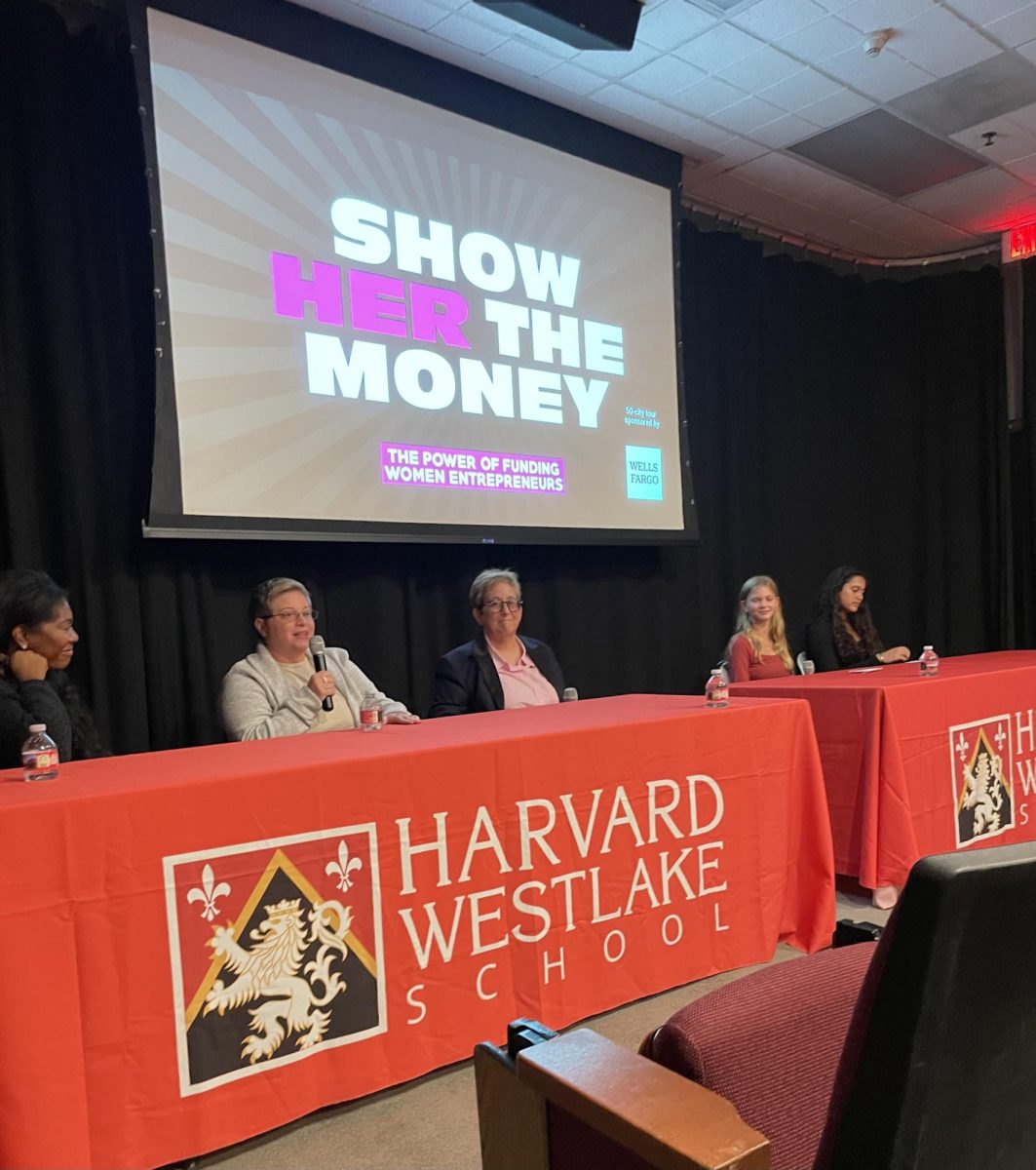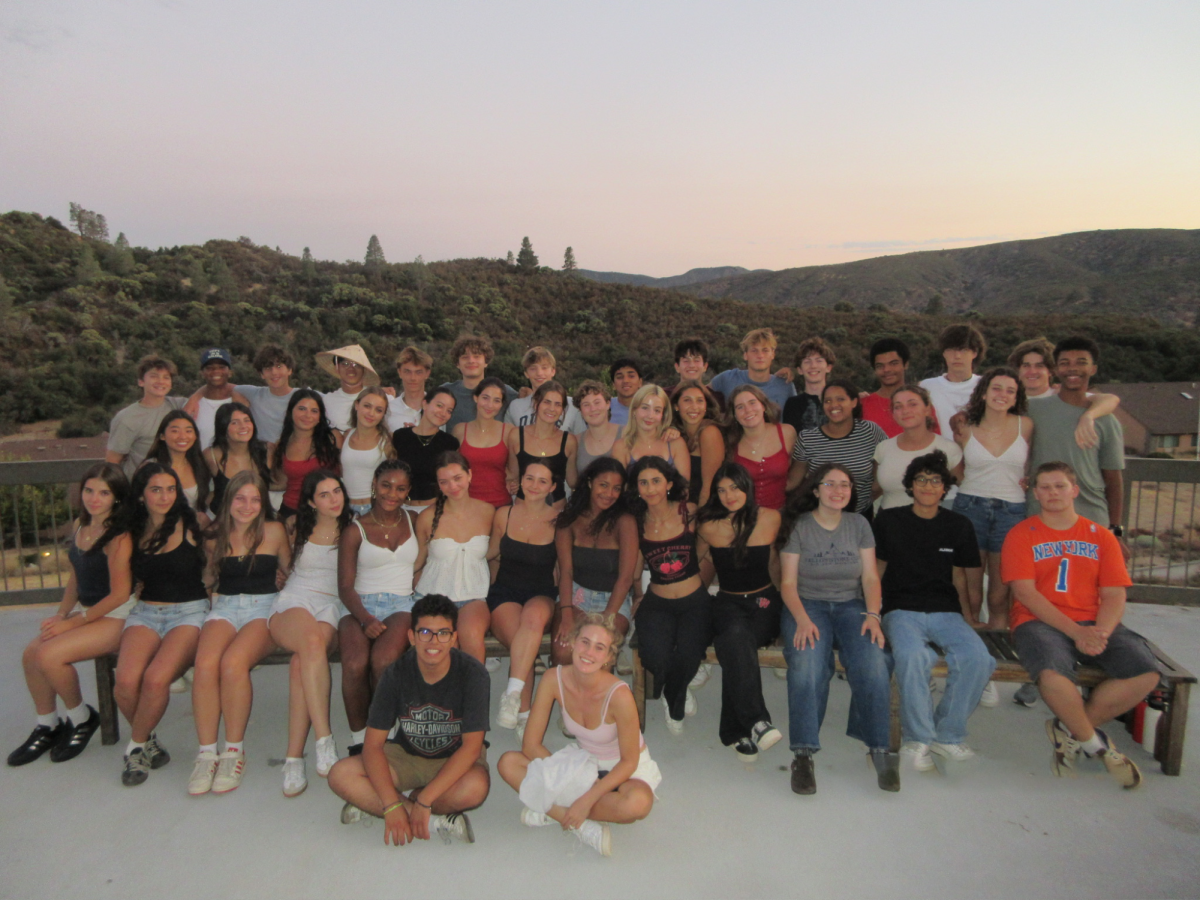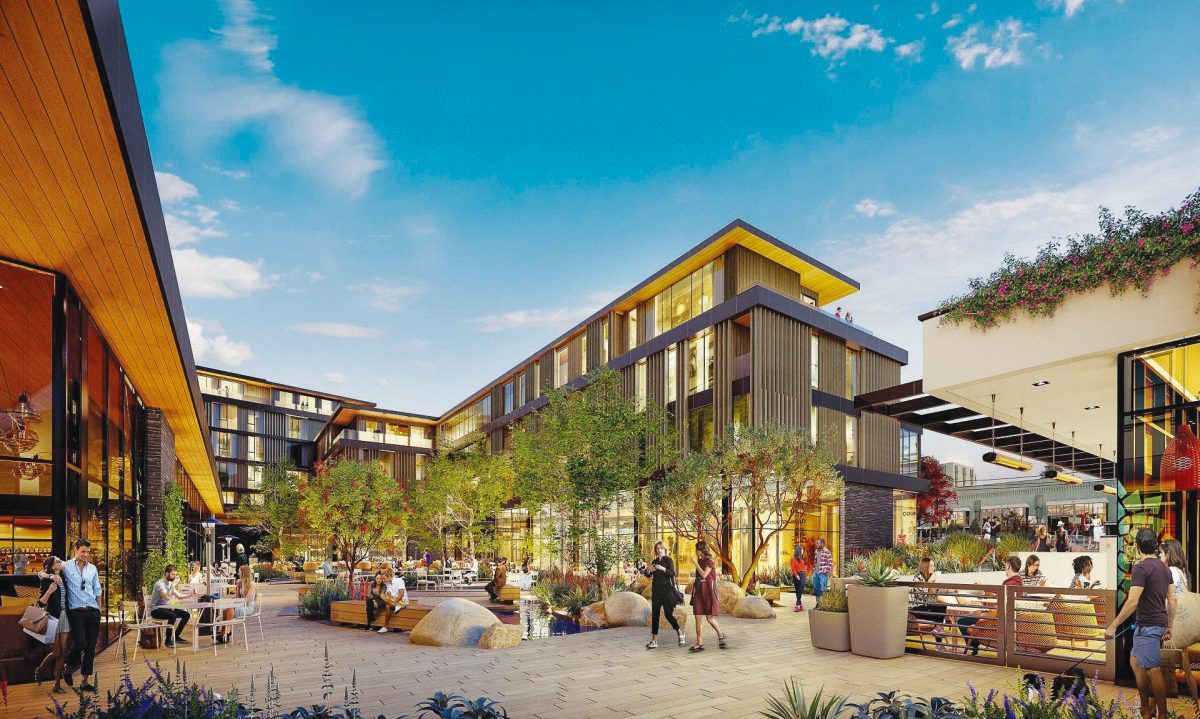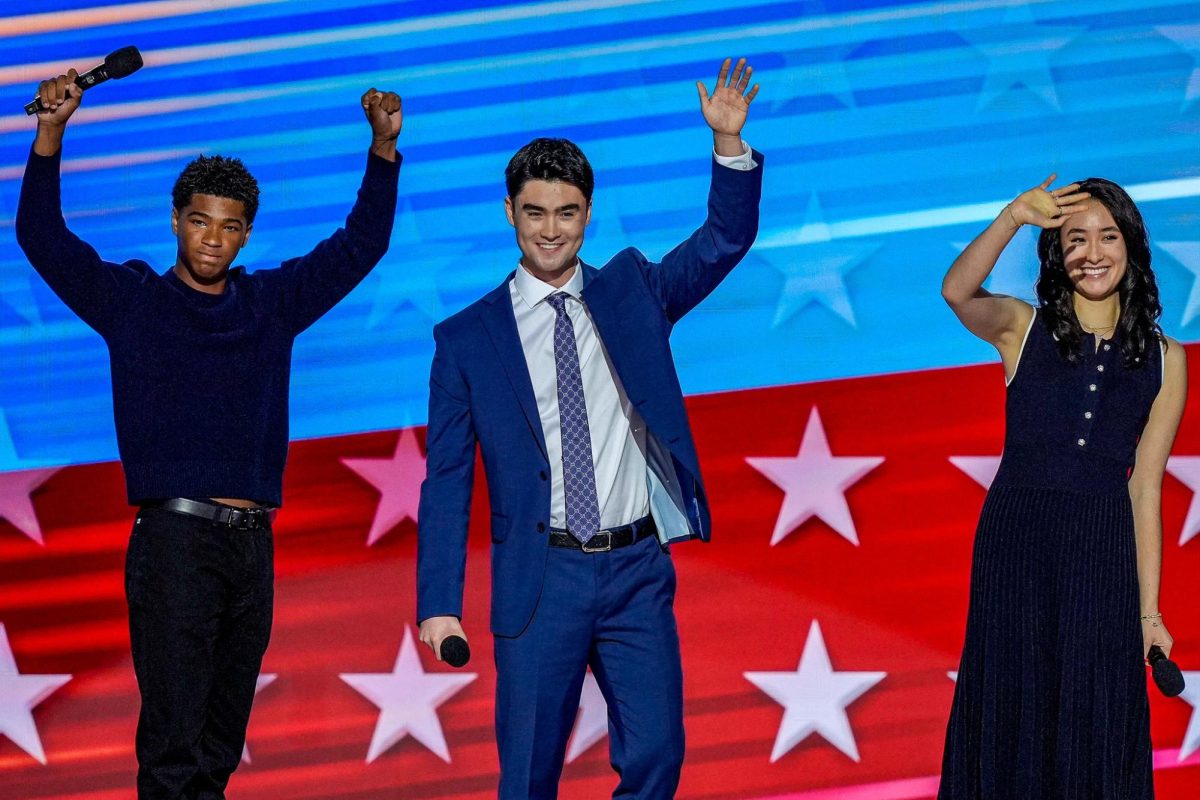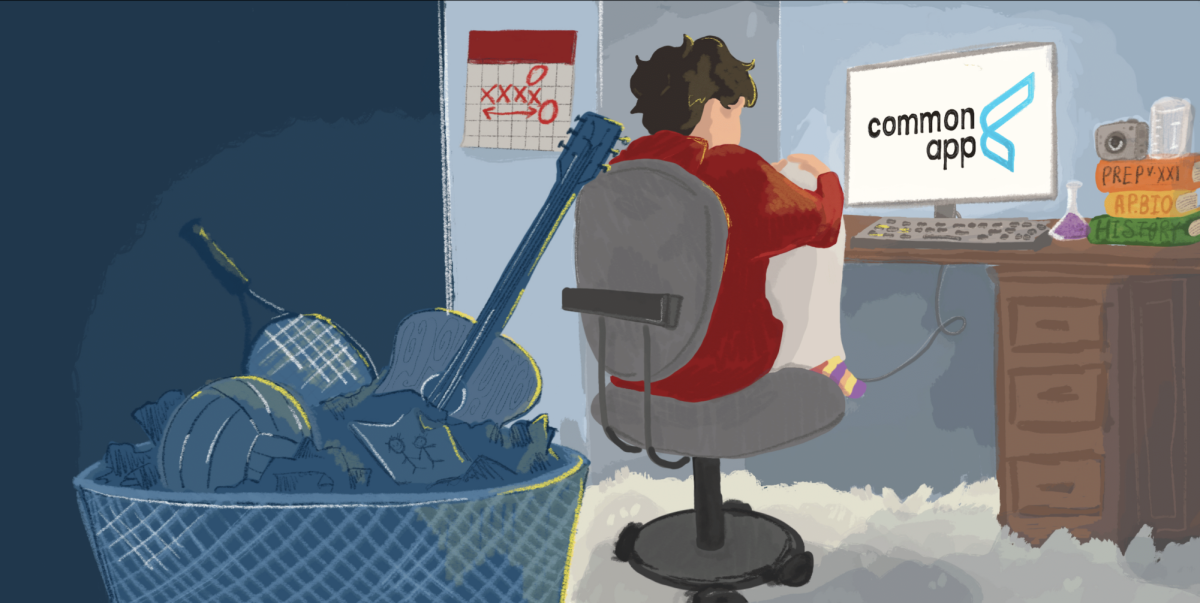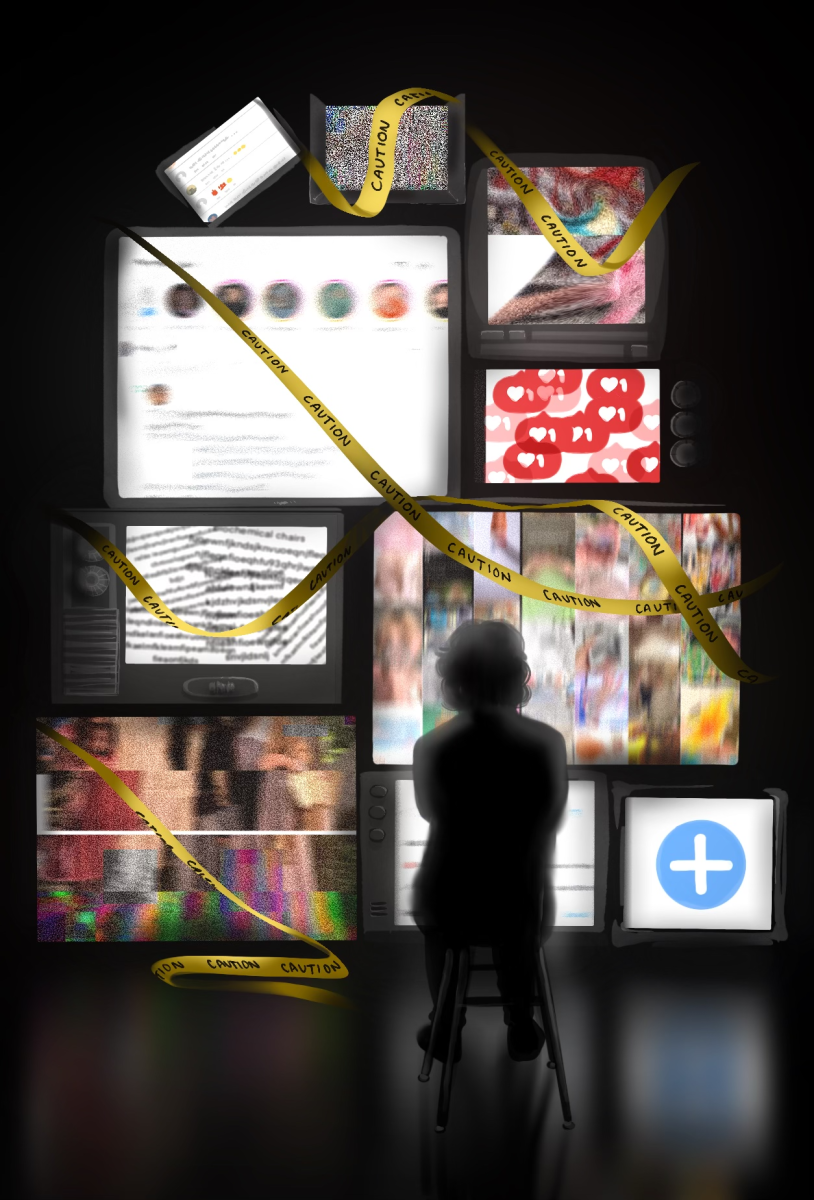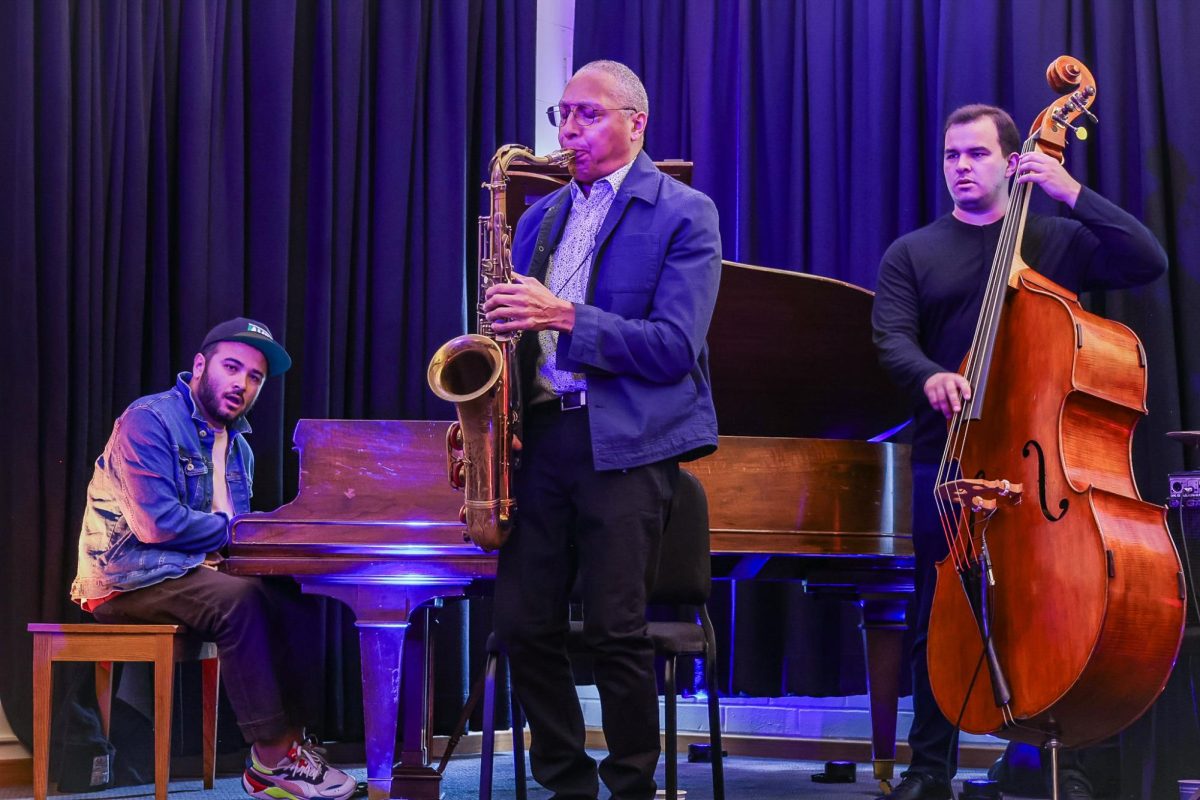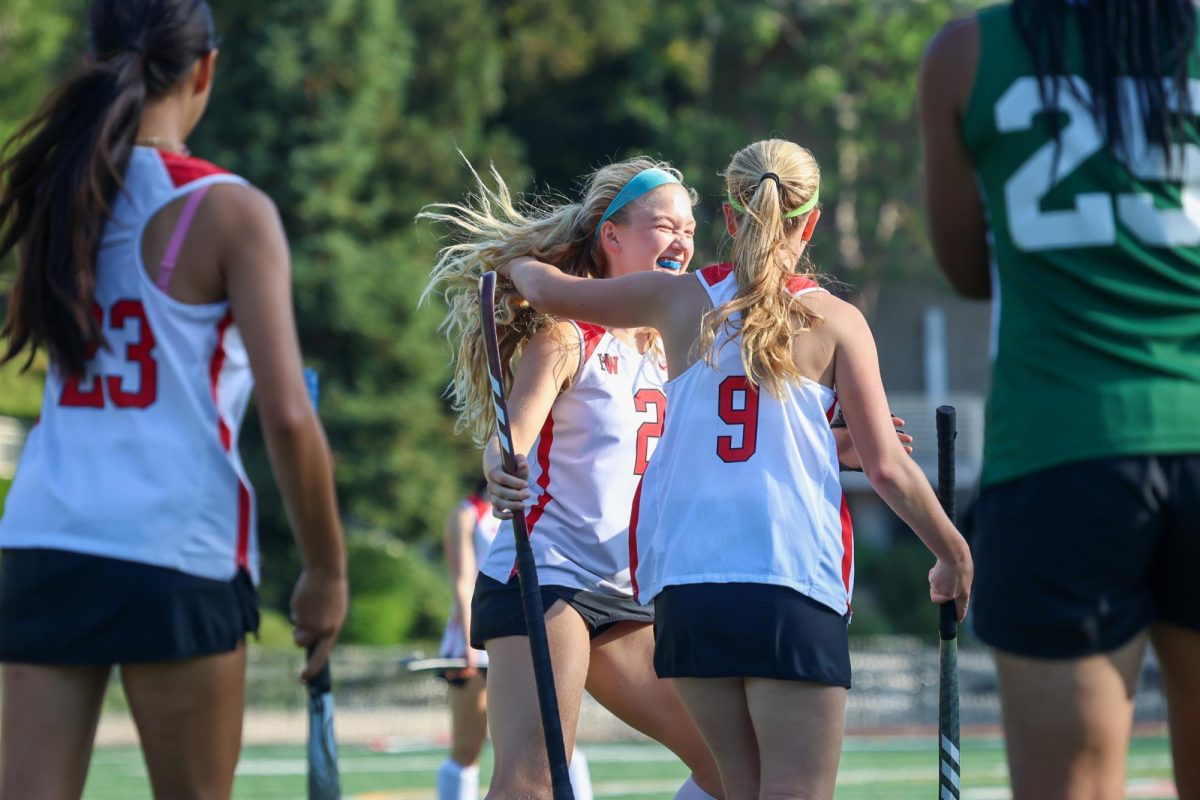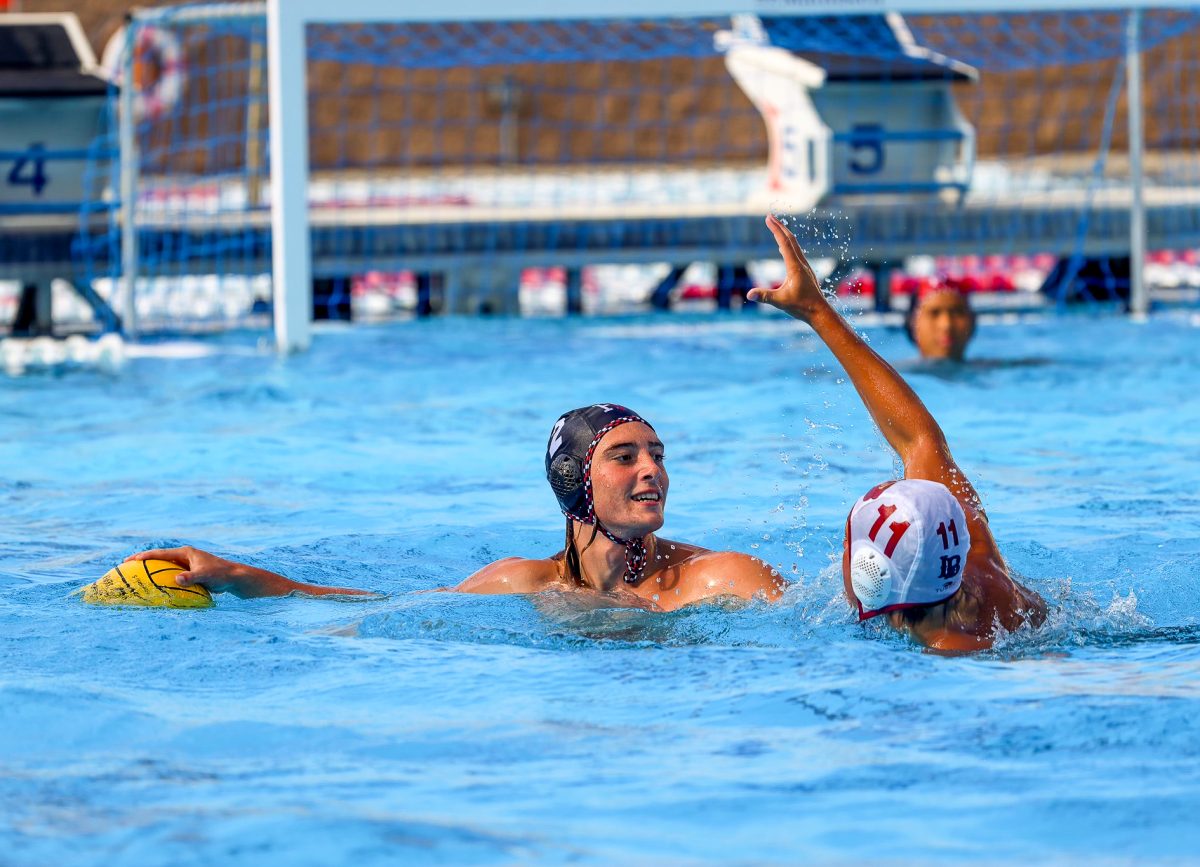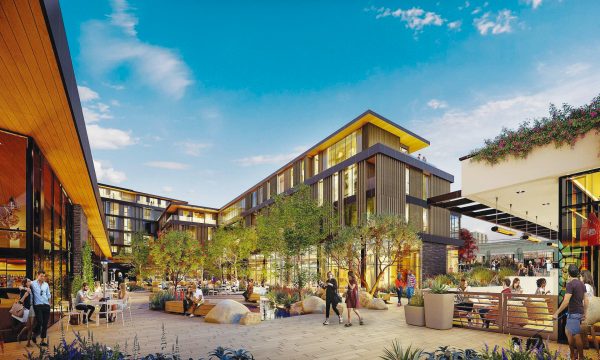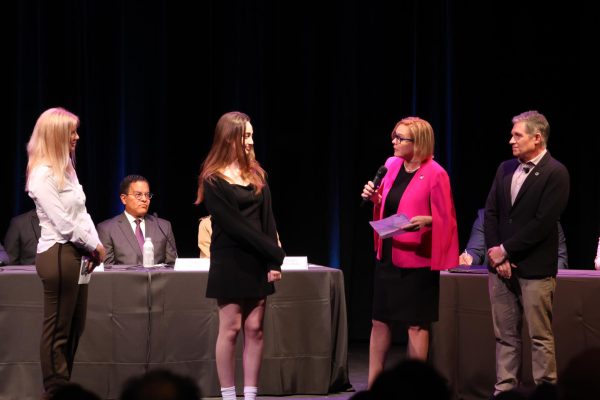City of LA releases River Park draft environmental impact report
Lucas Cohen-d'Arbeloff/Chronicle
A sign advertising the school’s River Park plan to replace Weddington Golf & Tennis is posted on a tennis court fence next to the Weddington parking lot. The River Park plan came closer to completion when the City of Los Angeles released its draft environmental impact report (DEIR).
President Rick Commons announced that the City of Los Angeles released the draft environmental impact report (DEIR) for the River Park project in an email to the school community March 10. Commons said the draft report concluded that the plan to replace Weddington Golf & Tennis could result in construction noise but would likely not have other significant impacts on the environment.
The school recently began advertising River Park on campus by placing signs in walkways, on the Quad and in Taper Gymnasium. Commons said that the school seeks student support for the project and that having a third campus will benefit both students and locals.
“We would like students to understand not only the process of getting approval but also to understand the various benefits that it will bring to the [the school] experience, to the broader community of Studio City, Los Angeles and the environment,” Commons said. “We would like students to participate in asking questions and expressing concerns should they have them. I really believe that when students understand the degree to which this will benefit not only [the school] but [also] the community and the environment, there will be enthusiasm.”
Save Weddington Board Member Teri Austin said the timeline for Studio City residents to comment on the school’s DEIR is insufficient.
“The [DEIR] filed with the city [was] bought and paid for by [the school],” Austin said. “It took almost two years to create that 6,000-page document, and to ask the residents and community members who are not professionals to digest the whole thing and then prepare a rebuttal in 45 days isn’t realistic or fair.”
Austin said the DEIR has not altered many Studio City residents’ concerns that the project would involve the dismantling of major aspects of Weddington’s geographical landscape.
“The [DEIR] hasn’t changed our mind about [the project] because nothing about the project has changed,” Austin said. “There’s been no mitigation of the 240 old-growth trees that are still going to be destroyed. There’s no mitigation of the heat islands [or] the two artificial turf fields. There’s no mitigation about the noise. But we’re still willing to talk, and we’d really love to come to the table and have an open forum and talk about real changes to this program so that it would be something that would fit in our neighborhood.”
Commons said the release of the DEIR will be followed by critical discussions with the Studio City community about the future of the project.
“It signals the beginning of a season of conversations that we’ll have with people who have questions and concerns about the project,” Commons said. “It starts the clock ticking toward the approval process with the City Planning Commission and the City Council.”
Studio City resident Ben Volokh ’22 said he has frequented Weddington and wants to preserve its facilities.
“In a cityscape that is increasingly concrete and crowded, Weddington’s golf course is a breath of fresh air,” Volokh said. “The driving range got me through quarantine as I [worked] to perfect my craft every day after school. [We should] save Weddington.”

